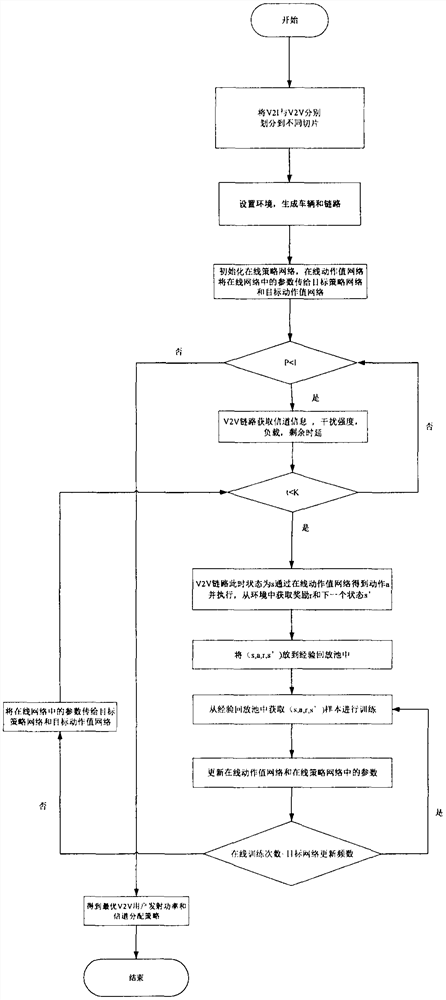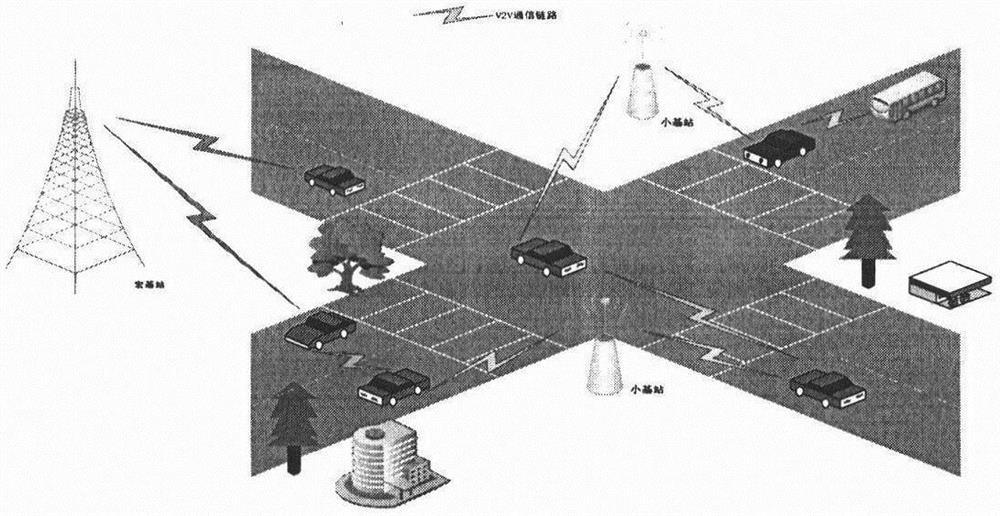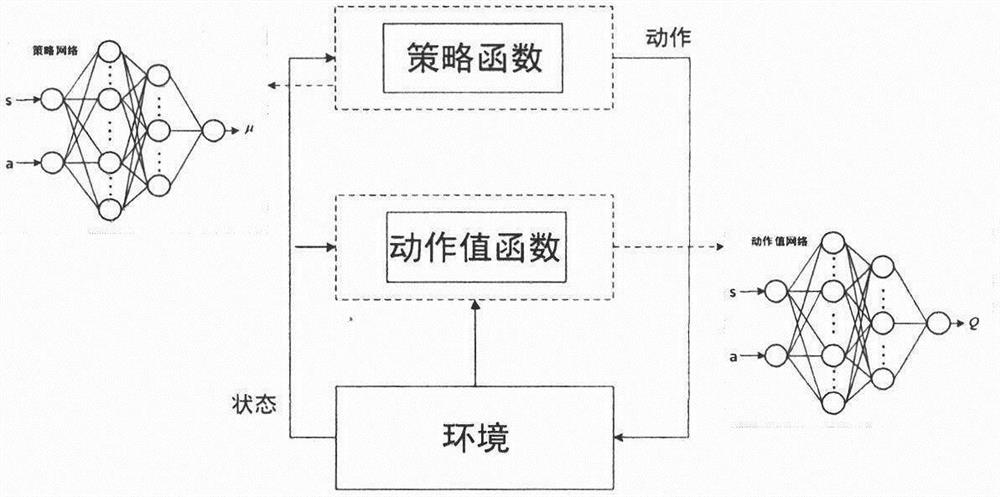5G Internet of Vehicles V2V resource allocation method adopting depth deterministic strategy gradient algorithm
A technology of resource allocation and gradient algorithm, which is applied in the field of Internet of Vehicles, can solve problems such as inability to meet differentiated service requirements, and achieve the effects of superior system throughput, reasonable resource allocation, and reduced mutual interference
- Summary
- Abstract
- Description
- Claims
- Application Information
AI Technical Summary
Problems solved by technology
Method used
Image
Examples
Embodiment Construction
[0032] The core idea of the present invention is: V2V communication uses network slicing technology to access the 5G network, adopts a distributed resource allocation method, regards each V2V link as an agent, establishes a deep reinforcement learning model, and uses the DDPG algorithm to optimize the depth reinforcement learning model. According to the optimized deep reinforcement learning model, the optimal V2V user transmit power and channel allocation strategy are obtained.
[0033] The present invention is described in further detail below.
[0034] Step (1), communication services in the Internet of Vehicles Communication services in the Internet of Vehicles are divided into two types, namely, broadband multimedia data transmission between vehicles and roadside facilities (V2I) and vehicle-to-vehicle (V2V) and driving Security-Related Data Transmission.
[0035]In step (2), use 5G network slicing technology to divide V2I and V2V into different slices.
[0036] In st...
PUM
 Login to View More
Login to View More Abstract
Description
Claims
Application Information
 Login to View More
Login to View More - R&D
- Intellectual Property
- Life Sciences
- Materials
- Tech Scout
- Unparalleled Data Quality
- Higher Quality Content
- 60% Fewer Hallucinations
Browse by: Latest US Patents, China's latest patents, Technical Efficacy Thesaurus, Application Domain, Technology Topic, Popular Technical Reports.
© 2025 PatSnap. All rights reserved.Legal|Privacy policy|Modern Slavery Act Transparency Statement|Sitemap|About US| Contact US: help@patsnap.com



